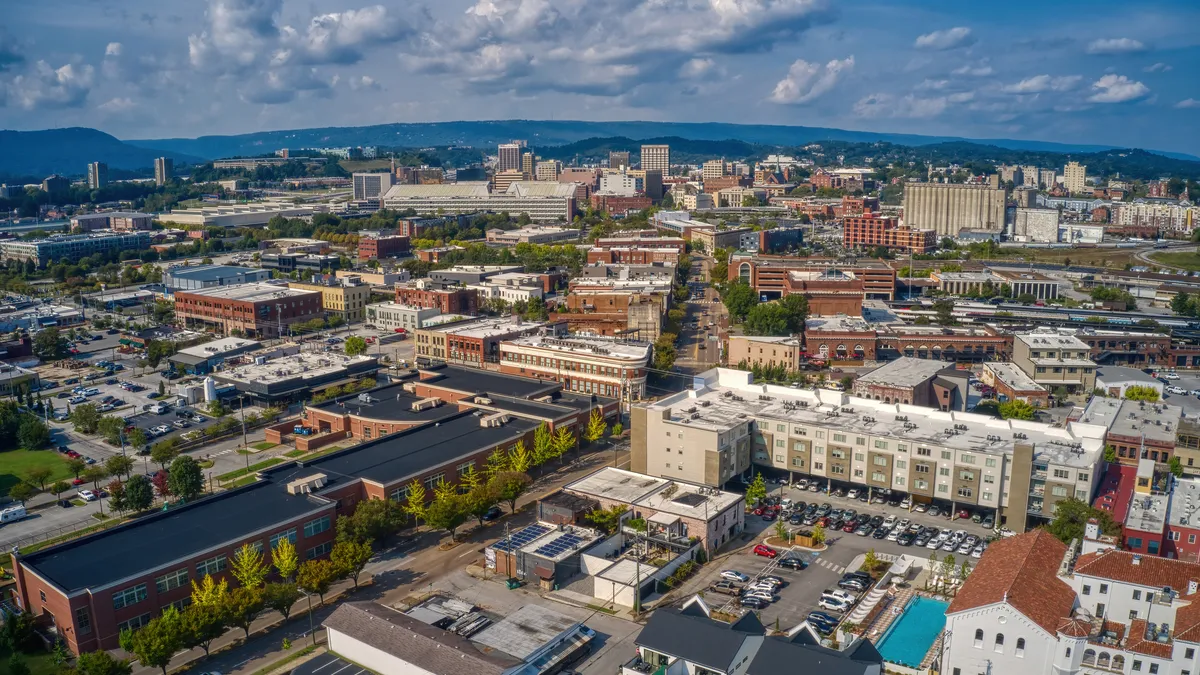Dive Brief:
- Chattanooga, Tennessee, will add dozens of “smart city intersections” through an ongoing partnership supported by the U.S. Department of Transportation.
- The Chattanooga Department of Innovation Delivery and Performance, working with Seoul Robotics and the Center of Urban Informatics and Progress at the University of Tennessee at Chattanooga, are installing sensing technology in 86 downtown intersections, building on a testbed established in 2019. The Federal Highway Administration is funding the $4.5 million initiative through the ATTAIN program, said CUIP Founding Director Mina Sartipi, and installations will happen this year and next.
- The intersections will be equipped with tools, namely lidar sensing technology, to gain real-time traffic insights and monitor infrastructure usage. That data can inform future traffic management, alleviate congestion, and map ideal locations for EV charging stations, among other potential benefits, partners say.
Dive Insight:
Chattanooga, the southeastern Tennessee city with about 182,000 people, has embraced smart city research and implementation. This week’s announcement builds on a 2019 testbed known as the MLK Smart Corridor. There, sensors track and predict the movement of pedestrians and vehicles, which partners say allows them to better understand traffic flow and road user interactions, and identify potentially unsafe incidents.
The expansion is expected to result in over 100 tech-equipped intersections across downtown. “Our work in Chattanooga will deliver more than insights into the city,” said William Muller, vice president of business development at Seoul Robotics, in the company’s announcement. The “scalable network of smart intersections” will allow partners to generate “a real world, data-informed testing environment for emissions management, pedestrian safety, electric vehicles and more,” Muller said.
Sartipi also explained that the partners have a digital twin that simulates intersections using those data inputs. The digital twin allows them to test and see how a change in traffic light timing, for example, could affect traffic flow.
Seoul Robotics said the expansion will be “the largest urban Internet of Things deployment of its kind in the United States.” While the earlier focus of the testbed largely centered on understanding safety issues surrounding vulnerable road users, Sartipi said this next phase of the testbed and its growing footprint will allow researchers to focus on “next-generation transportation,” including electrification, connected vehicles, and potentially automated vehicles.











